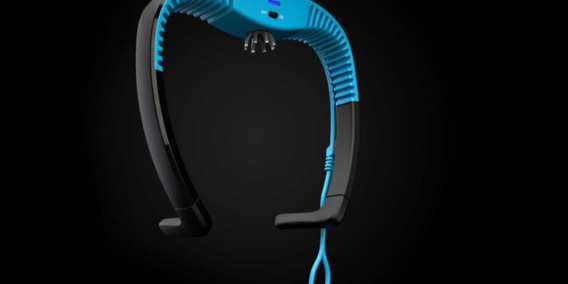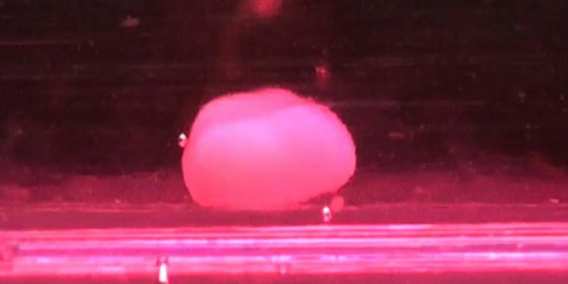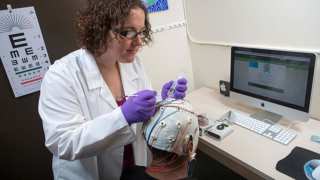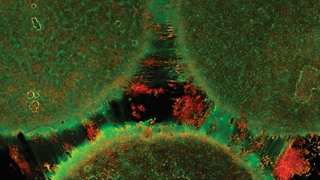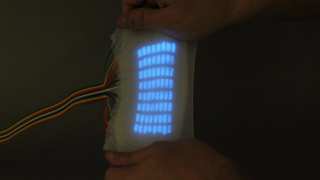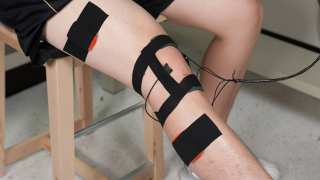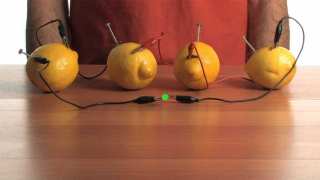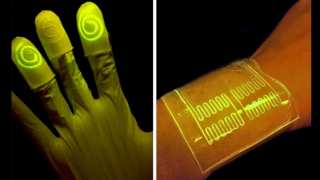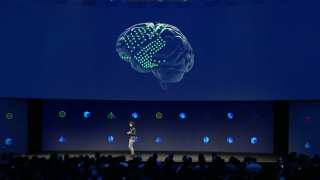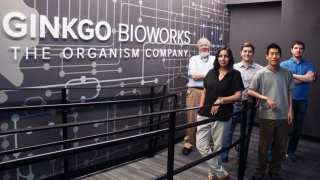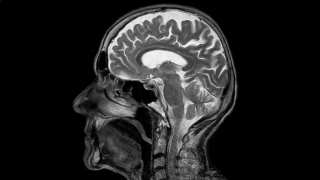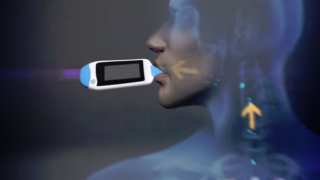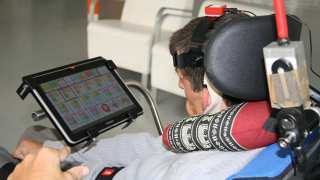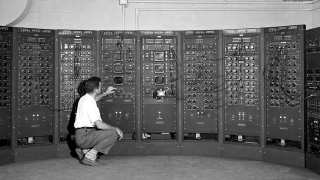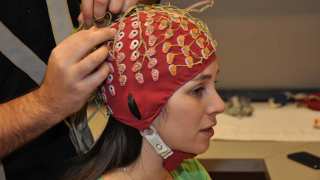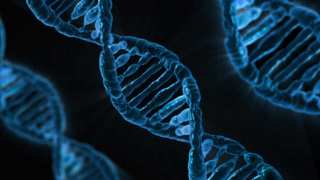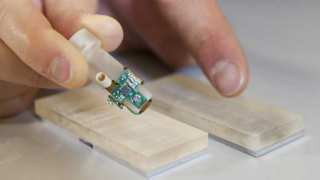Bioengineering
CEREBRE: Is a ‘Brainprint’ the Future of Biometric Technology?
The positive identification of a person has been identified as a need of our growing society for centuries, together with crime and law enforcement. First there was facial recognition and detection of walking style. Now, with our ever-increasing human population the need for “more accurate” identification appeared, including fingerprints and handwriting analysis, either to identify or to authenticate (e.g. bank transactions) certain individuals.
3D Brain-on-a-chip: Novel Brain Modeling for Future Treatment of Neurological and Psychiatric Disorders
The brain is the most complex structure in our body. It has more than 200 billion neurons, which are all interconnected in specific orders. This creates synapses, which are the neurotransmitters. Between these synapses, signals are transferred and this in turn creates a circuit.
How Your Brain Retunes Noise into Meaningful Dialogue
How many times have you gone to karaoke or heard someone sing along with a song on the radio only to sing the wrong lyrics? Don’t be ashamed, it’s more common than you think. When I first heard Elton John’s Tiny Dancer, without knowing the song’s title, I wondered about the lyric ‘hold me closer, Tony Danza’. Danza is a famous Italian-American actor and former boxer, but I was confused why this song was about him.
Printing With Paper, Not On It
Cellulose is the world’s most abundant organic compound on Earth. It is estimated to make up 30% of the entire globe’s non-fossil organic carbon. It is used as a structural support biopolymer by plants to build up cell walls. You can find cellulose in many different forms, as humans have learned to exploit this naturally occurring material. We have learned to build houses and furniture from hardwood, make clothing out of cotton fibers, and press the material into thin sheets of paper.
Super Elastic Electroluminescent Skin
Attempting to test the behavior of soft robotic systems beyond boundaries, a group of aerospace and mechanical engineering researchers led by Rob Shepherd have created electroluminescent “skin”. This, by replicating the model of cephalopods who possess natural skin stretchability and color changing organs for their protection as in camouflage, visual display and communication.
Bioacoustical Engineering for Joint Analysis
Crepitus is the noise your joints make when they move. Loud pops from your knees and knuckles are not the sounds of bones breaking. The pop is caused by cavitation; the rapid change in pressure of the synovial fluid that allows carbon dioxide to escape. A small cavity in the joint is formed and the bubble pops, giving the familiar cracking noise. In most cases, the sound is nothing to be concerned about. If the sound is accompanied by pain, that is a different situation.
Biosensor Powered by Stomach Acid
Doctor visits are one of those things no one looks forward to. Taking time off work to get poked and prodded is never a fun experience. So what if you could take a pill that monitors all of your vital signs? Even better, what if all that data was transmitted to your doctor? The Massachusetts Institute of Technology and Harvard Medical School are trying to develop self-powered capsules that can monitor your internal health.
Chemical Sensing at Your Fingertips
In March 2014, West Africa suffered the largest outbreak of the Ebola virus in history. The World Health Organization (WHO) reported over 28,000 cases of Ebola in Guinea, Liberia, and Sierra Leone with 11,000 deaths. Since March 2016, the infection had been contained enough to warrant a downgrade in its status. They WHO later issued an update showing that the major mode of transmission was through direct physical contact with sick individuals; even dead bodies could transmit the infection.
Facebook on the Verge of Brain-Computer Interface To Let You Type With Your Mind
Facebook has finished running F8, their annual conference where they explore the potential technologies of the future. Many of us have been waiting for some pretty exciting revelations as to where they see the company heading in the future and as usual, they did not disappoint.
The Sweet Smell of Yeast
During my graduate studies, I once played a game with my lab mates called “hey, smell this”. I inevitably lost, as the acrid sulfur scent of thioanisole wafted up my nostrils. Though we’re trained as chemists not to inhale chemicals, there’s always that nagging curiosity to take a quick sniff. Most organic chemists can identify common solvents by scent, which is useful for avoiding incorrect reagents expensive reactions. Nevertheless, I’ve since avoided sniffing reagents around the lab.
Decoding at the Speed of Synapse
No matter how many times it’s asserted, our brains are not computers. It’s not uncommon to compare the brain to the currently favored technology. Our brains have been compared to many different inventions throughout history, from clockworks to telephone switchboards. Our understanding of the brain has grown, and there are parallels between a brain and a computer. Both can learn and adapt, have short term and long term storage, and can be modified (known as neuroplasticity in the brain).
An Artificial Cancer Smelling NA-NOSE
Diagnostic tests, although vastly improved in the recent years, seldom identify abnormalities in the body early enough (usually beneficial only in later phases) in order to employ appropriate treatment options and care. Apart from this major issue, challenges such as slow processing, false-negatives, high costs and side effects, pose an incredible danger to patients with life-threatening conditions, who require quick turnover periods.
3D Bioprinting of Tissues
3D printing has been around a lot longer than most people realize. Presently, 3D printing is celebrating nearly 30 years of manufacturing technology. In the early 1980s, the technology’s roots were set with stereolithography. Fabrication of models was done using photosensitive acrylics or resins that upon treating with UV radiation would solidify. The models could then be built up layer-by-layer, allowing for the quick production of 3D models.
Brain-Sensing Technology Used to Help Sufferers of Paralysis Communicate
A team from Stanford University has been hard at work developing a new brain-to computer hook-up which allows people suffering from paralysis to type via direct brain control. There are millions of sufferers of paralysis across the US, and the goal of this research is to restore function to people with paralysis, thus providing a vital communication link. Paralysis can be caused by a number of factors, including spinal cord injuries and neurodegenerative diseases such as Lou Gehrig’s disease.
Return of Analog Computing for Cell Simulation
The world is slowly becoming more and more digital; cassette tapes have given way to MP3 players and analog TV antennas have been replaced with streaming video. This is great for preserving media and distributing over the internet, but digitalization still stumbles when it comes to simulating whole organs or biological systems.
Monitoring the Brain Outside the Lab
New, state of the art equipment for monitoring neural response is being developed by scientists and engineers from the University of California, San Diego. The researchers at the Jacobs School of Engineering and the Institute for Neural Computation are developing a brain monitoring system that monitors 64-channels and is wearable. The team is headed by Tim Mullen and Mike Yu Chi.
DNA Nanothermometer
Biochemists at the University of Montreal have synthesized the world’s smallest thermometer. To do this, they designed and synthesized DNA that had a programmable linear response to temperature. This DNA probe comes with increased sensitivity and response when compared to previous attempts.
Graphene Laser Forms a Brain-Like Processor That Can Think, Recognize, and Remember
The human brain is a wondrous thing. It can process many different types of complex information nearly instantaneously. In a sense, your brain is the best computer out there—although today’s most powerful computers based on silicon chips can complete mathematical operations far faster than the average human, they are unable to or clumsy at performing certain tasks that our brains can do with ease.
Bionic Fingertip Gives Amputees the Feels
Touch, one of the most formidable and sophisticated of the five senses, has the ability to allow humans to connect with things on a deeper level and enjoy a sense of empowerment from the sensation. This, unfortunately, leaves behind millions of amputees around the world from experiencing the same, a failure to communicate kinesthetically.
New Ears from Alginate
We’ve all suffered wounds before. For lesser wounds, scrapes and scratches, our bodies will manage to heal in days or weeks. Healing is done in stages. The body’s first response is inflammation; the blood vessels contract to promote clotting, the area warms up, and your immune system mounts an assault with neutrophils and macrophages against the insult.

